Marina Abramović at the Royal Academy
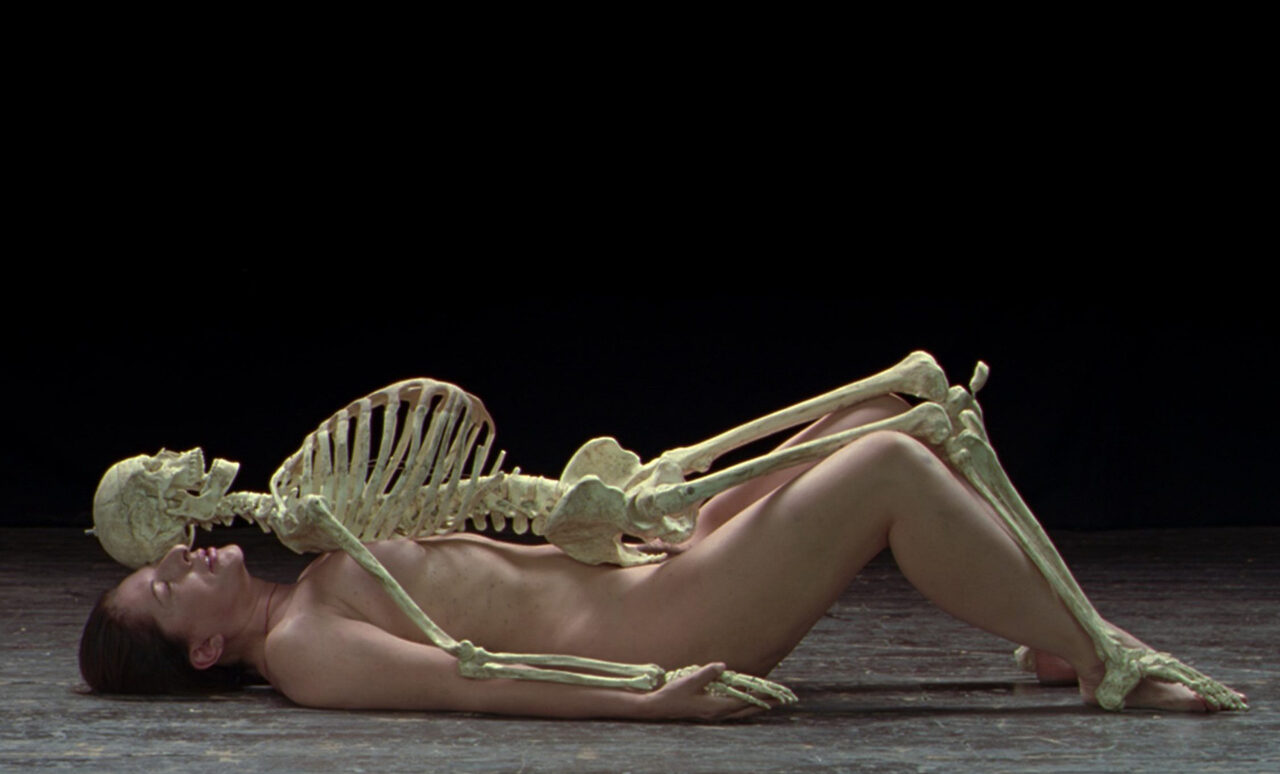
In a career spanning five decades, the internationally acclaimed performance art pioneer Marina Abramović has often subjected herself to trials of her own ability to endure physical and mental challenges, on occasions even risking her own demise. The new retrospective of the Belgrade-born artist’s career at the Royal Academy has also been a long time in gestation. Incredibly, she becomes the first woman in the institution’s 255-year history to be given the honour of a solo show in the main galleries. Originally planned for 2020, it was postponed due to Covid-19, only to be rescheduled once more in 2021 – the understandable decision being taken that the required close proximity of “re-performers” to visitors would constitute a health risk.
With the long overdue exhibition’s opening finally on the horizon this year, Abramović then had a life-threatening embolism on her lung in May, following a routine knee operation. She survived thanks to three operations and nine blood transfusions, summoning all her powers of mental willpower to make a recovery. It is a testament to her recuperative abilities that she was able to travel over to London from her home in the States for the press opening and to engage in the event over the full extent of its run. Prohibited from flying for the foreseeable future, the artist crossed the Atlantic in the Queen Mary II, a seven-day journey she evidently enjoyed.
The exhibition itself sees the presentation of over 50 significant works from Abramović’s long career. Aside from performances, there are also photos, installations and sculptures. Some of her most powerful performances can be viewed via archive video footage. One first enters the opening area, entitled “Body Limits” to be met with a multiplicity of screens showing film footage of the artist staring into the eyes of participating visitors during her attention-grabbing 2010 performance, The Artist is Present at the Museum of Modern Art in New York over three months. Among the sea of faces, some wrought with emotion, can be recognised Lou Reed, Lady Gaga and Alan Rickman.
Visitors also find a reconsidering of Abramović’s iconic early work Rhythm 0, originally performed in Naples in 1974. The artist had urged her gallery audience to interact with her in any way they saw fit over six hours, having presented them with 72 items to choose from on a table. Notoriously, the loaded pistol was held to her head prompting a frantic melee to subdue the man responsible. So harrowing was the experience that an area of her hair turned white with shock. The table with all of the original items has been recreated here, overlooked by actual recorded black and white film from the event. This time health and safety precautions have been paramount, with the gun being securely attached to the surface.
“The Communist Body” sheds light on Abramović’s origins in the former Yugoslavia of Tito. Her parents’ profile as high-ranking heroes of the state and the experience of being brought up in that environment ensured that Communist ideals have informed her practice. The disciplinarian background is surely at the root of the asceticism and rigour pervading much of her career. Works here powerfully project the dramatic emotions expressed by the “baroque” Balkan mind as she calls it. Rhythm 5 (1974), shown here at the RA in stills, saw the artist lay down inside the burning frame of a five-pointed Communist wooden star. With her oxygen depleted by the flames, she fell out of consciousness and had to be rescued by a doctor in the crowd. A later, hard-hitting work she created at the Venice Biennale of 1997, Balkan Baroque was a condemnation of the terrible conflict of that decade, which tore apart her country of birth. Abramović sat for days in a white dress on top of a large pile of blood-covered cow bones, trying strenuously and without success to scrub the blood off.
In recent years, Abramović has been considering her legacy and training young people in her methods, partly to ensure that her performative pieces can be recreated after she has gone. Notably at the RA show, the artist has chosen a trusted group of these young performers, all of whom were taken on a rural retreat prior to the opening where they were asked to meditate, consume only water and refrain from speaking. She spoke at the press conference about how she was happy for some of her most powerful works to be given new energy by these “re-performers” as she calls them.
Those who have viewed the documentary The Artist is Present (2010) online will have seen her moving reunion with her former lover collaborator and partner, the late German artist Ulay. A large gallery space at the RA features some of the memorable works they created during that intense creative period. One finds them exploring male and female dualities. In Light/Dark (1977) the two can be seen sitting opposite one another, taking it in turns to slap each other’s faces with increasing vigour. Elsewhere, they join their mouths together in a passionate kiss where they seem more intent on holding their breath. Abramović would return to the vulnerable state of Rhythm 0 in Rest Energy (1980), another collaboration with Ulay. Here, the two stand facing each other as Ulay aims an arrow tensed on the bow straight at his partner’s heart, evoking emotions of vulnerability and total trust with Abramović holding the bow. Both slightly tilt back on their heels. The intensity of the four-minute performance is heightened by microphones hooked on their chests, which capture the increased tempo of their heartbeats.
In order to move onto the next gallery, visitors will find their paths blocked by two naked performers, one male and one female, standing either side of a doorway. It is a restaging of Abramovic and Ulay’s Imponderabilia performance from 1977. The public has to squeeze sideways through this narrow space, choosing to face either the man or the woman, instantly throwing up questions of intimacy and misogyny.
Beyond this portal lies “Absence of the Body”, a section focused on the break-up of Abramović and Ulay’s relationship. Featured is film footage from The Lovers, The Great Wall Walk made by the separating couple in 1988 to ritualistically mark the end of their relationship. Each of them walked for 90 days across opposite ends of the Great Wall of China and met fleetingly before parting company. During her walk, Abramović became wrapped up in the Great Wall’s mythology: on one gallery wall are displayed rubbings she made in ink and charcoal of the structure.
For many decades, the artist has immersed herself in the study of world cultures and ancient spirituality. This comes to the fore in her 2002 piece Nude With Skeleton, recreated at the Royal Academy by trained students of the Marina Abramović method. The Serbian-born artist imitated the tradition of Tibetan monks by lying naked beneath a human skeleton on the floor, each breath bringing the bones to life. Here, the reperformer reconjures the original above the film of the artist from 2002.
The second half of this exhibition reveals Abramović delving into crystals, stones and metals as conveyors of energy. She describes them as “transitory objects”, which must be interacted with. Visitors are urged to lie on a copper bed whilst elsewhere being instructed to press their head, heart and sexual organs against quartz stones attached to the wall in choice positions. This writer found them relaxing without having any transformative experience.
Luminosity (1997) is another work being recreated at the RA. Representing an impressive feat of endurance, not to mention core strength, the trained performer is required to sit on a bicycle seat in the middle of the gallery wall with a projected light shining on her. It evokes feelings of loneliness and pain whilst alluding to spiritual elevation.
As this much-anticipated show draws to a conclusion, one comes across House with the Ocean View (2002). On the day of the press opening, this was not performed but it promises to be challenging for the three women chosen to revitalise the original performed at the Sean Kelly Gallery, New York. Abramović lived for a dozen days straight in three spaces from the floor with her everyday actions ritualised. Like the artist, the protegees will be fasting by only drinking water, being observed by the public 24 hours a day.
Intense, discomforting and visceral at times, calming at others, this well-balanced exhibition brings the impactful career of Marina Abramović into sharp relief. Revealed is an artist always prepared to test her physical and mental tolerance and to explore the space between the physical and the spiritual. The self-styled “grandmother of performance art” surprised many at the press conference by declaring she no longer believes the well-worn adage of good art only emerging from tragedy and now wishes to make art from happiness. A new chapter perhaps awaits.
James White
Marina Abramović is at the Royal Academy from 23rd September until 1st January 2024. For further information visit the exhibition’s website here.









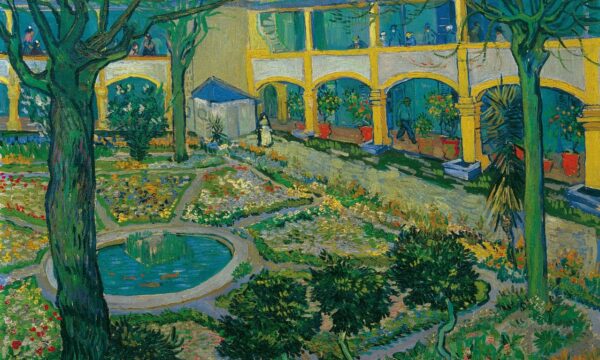

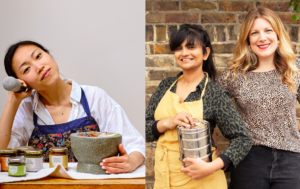
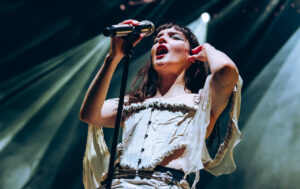
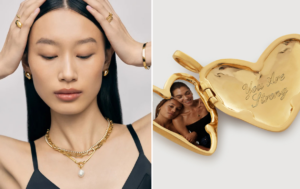
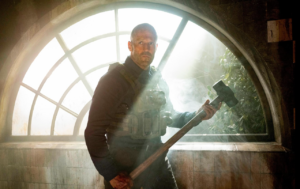






Facebook
Twitter
Instagram
YouTube
RSS